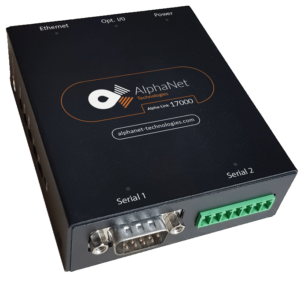Introduction
In our rapidly digitalizing world, where every second of downtime can lead to significant financial losses, understanding industrial communication protocols like Modbus, and more importantly, devices like Modbus Gateways, becomes essential. But what exactly is a Modbus Gateway? Let’s dive in and discover!
What is Modbus?
Modbus is a communication protocol typically used in industrial systems. It was developed in the late 1970s to communicate with PLCs (Programmable Logic Controllers) and has remained a de facto standard ever since.
Modbus Protocols
Two primary types of Modbus protocols are Modbus RTU (Remote Terminal Unit) and Modbus TCP/IP. The former runs on serial communication like RS-232 or RS-485, while the latter runs on Ethernet-based networks.
What is a Gateway?
In networking, a gateway is a hardware device that acts as a “gate” between two networks. It allows data to flow from one network to another, converting protocols as needed for the receiving network to interpret and use the data.
What is a Modbus Gateway?
A Modbus Gateway is a device that sits between different parts of a network to facilitate communication between various Modbus devices. Its core function is to translate Modbus protocols (like Modbus RTU to Modbus TCP/IP and vice versa) to ensure seamless data exchange across networks.
Importance of a Modbus Gateway
In essence, a Modbus Gateway ensures different devices “speak the same language”. It allows diverse systems to communicate effectively, enhancing overall system interoperability.
How Does a Modbus Gateway Work?
Understanding the function of a Modbus Gateway requires understanding two crucial aspects: connection between devices and data conversion.
Connection between Devices
The Modbus Gateway connects to different devices through various communication ports (like RS-232, RS-485, or Ethernet), depending on the specific protocols those devices use.
Data Conversion
Once connected, the Gateway reads data from one device, translates it into a protocol that the receiving device can understand, and then forwards that data on.
Applications of Modbus Gateways
Modbus Gateways find use in a wide range of industries, from manufacturing and utilities to building automation and transportation. They facilitate streamlined, efficient communication between different networked devices, ensuring that data is readily accessible and available when needed.
Benefits of Using a Modbus Gateway
Incorporating a Modbus Gateway into your network can offer several advantages.
Increased Efficiency
Modbus Gateways enhance communication efficiency between devices, minimizing system lag and potential data bottlenecks.
Better Compatibility
With a Modbus Gateway, compatibility issues become a thing of the past. They allow devices running on different protocols to communicate, breaking down barriers between them.
Enhanced Security
Modbus Gateways can also enhance network security by monitoring data flows and blocking suspicious activity.
Conclusion
Understanding the intricacies of Modbus Gateways is pivotal in the current industrial scenario. They ensure efficient, secure, and uninterrupted communication between devices, leading to smoother operations and minimized downtime. Remember, in a world that’s rapidly going digital, every moment counts!
FAQs
- What is a Modbus Gateway used for? A Modbus Gateway is used to facilitate communication between different Modbus devices within a network, translating between various Modbus protocols as needed.
- How does a Modbus Gateway enhance network security? A Modbus Gateway can monitor data flows within a network, flagging and potentially blocking any suspicious activity.
- What industries commonly use Modbus Gateways? Industries such as manufacturing, utilities, building automation, and transportation frequently use Modbus Gateways.
- What is the difference between Modbus RTU and Modbus TCP/IP? Modbus RTU is a serial communication protocol, while Modbus TCP/IP is an Ethernet-based protocol.
- Can a Modbus Gateway solve compatibility issues in my network? Yes, a Modbus Gateway can translate between different Modbus protocols, thereby solving any compatibility issues between devices in your network.


